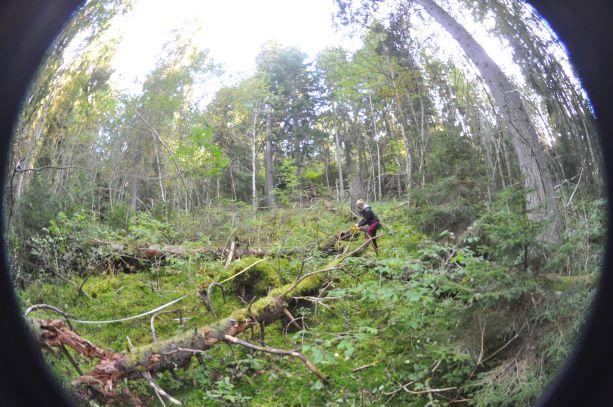Method
Sampling design
I chose 35 locations around county of Östergötland, where 11 were nature reserves (both new and old) and 24 were production forests, even distributed between ages 1-6 (clear-cut), 15-25, 35-45, and 65-85. In each location, five window traps were mounted, sampling saproxylic beetles in their flying phase. Most often, the traps were mounted between two trees, however, in clear-cuts, the traps were mounted between two sticks.
All traps were mounted between 1-6 may and emptied a first time between 8-12 June and a second time between 13-18 July. Simultaneously as the second time the traps were emptied, each trap was disassembled.

Sorting species
All beetles sampled in the traps were sorted out from the sampled material and sent to specialists in species identification. The specialists identified most of the saproxylic beetles to species level, but some to genus level. All beetles were divided into red listed or not (according to Swedish red-list 2020), nature value indicators or not (if they are or have been red listed sometime between 1993-2020), and to functional groups:
- Obligate saproxylic beetles = Beetles exclusively dependent on dead wood or wood-inhabiting fungi for development
- Facultative saproxylic species = Beetles that may breed in other habitats but are associated with dead wood or wood-inhabiting fungi.
Ecological variables
Measurements on basal area/ha, dead wood, vegetation cover, and canopy openness were taken around every trap. Methods and equations for all measurements, except canopy openness, were in line with those from the National forest inventory (Riksskogstaxeringen), with a few modifications.

Responsible for this page:
Director of undergraduate studies Biology
Last updated:
05/14/21
